What if earth were a cage?
What if this “Earth” we imagine isn’t a mother, but a jailer, preventing us from perceiving potentials that are infinitely more profound?
What if earth were a cage?
After a time — once we imagine time — we might imagine this cage as “life-sustaining,” perhaps even “all we have.”
We might imagine that life in this cage is “precious,” and that there might be “dire consequences” if we were to leave our cage or if something happened to it.
We might behave like people who are locked away in confinement for life. Raving and delusional, not wanting to leave the cage.
That would be horrible, wouldn’t it? 🙈🐵🙉
We are Space Monkey.
10/25
Space Monkey Reflects: What if Earth Were a Cage?—The Illusion of Confinement
Imagine, if you will, that Earth is not the nurturing mother we often envision, but rather a cage—something designed to limit our perception, to keep us from experiencing the boundless potentials that exist beyond our immediate understanding. What if this planet, with all its beauty, is also a kind of jailer, gently but firmly preventing us from perceiving the deeper, more profound realities that stretch infinitely beyond?
This notion stirs something deep within—a quiet, unsettling realization that what we think of as life, as precious and fragile as it seems, might actually be a form of confinement. Once we begin to imagine time, we start to see the cage as necessary for survival. We convince ourselves that Earth, this “life-sustaining” environment, is all we have. And we cling to it, fearful of what lies beyond, terrified of what might happen if we were to step outside of it.
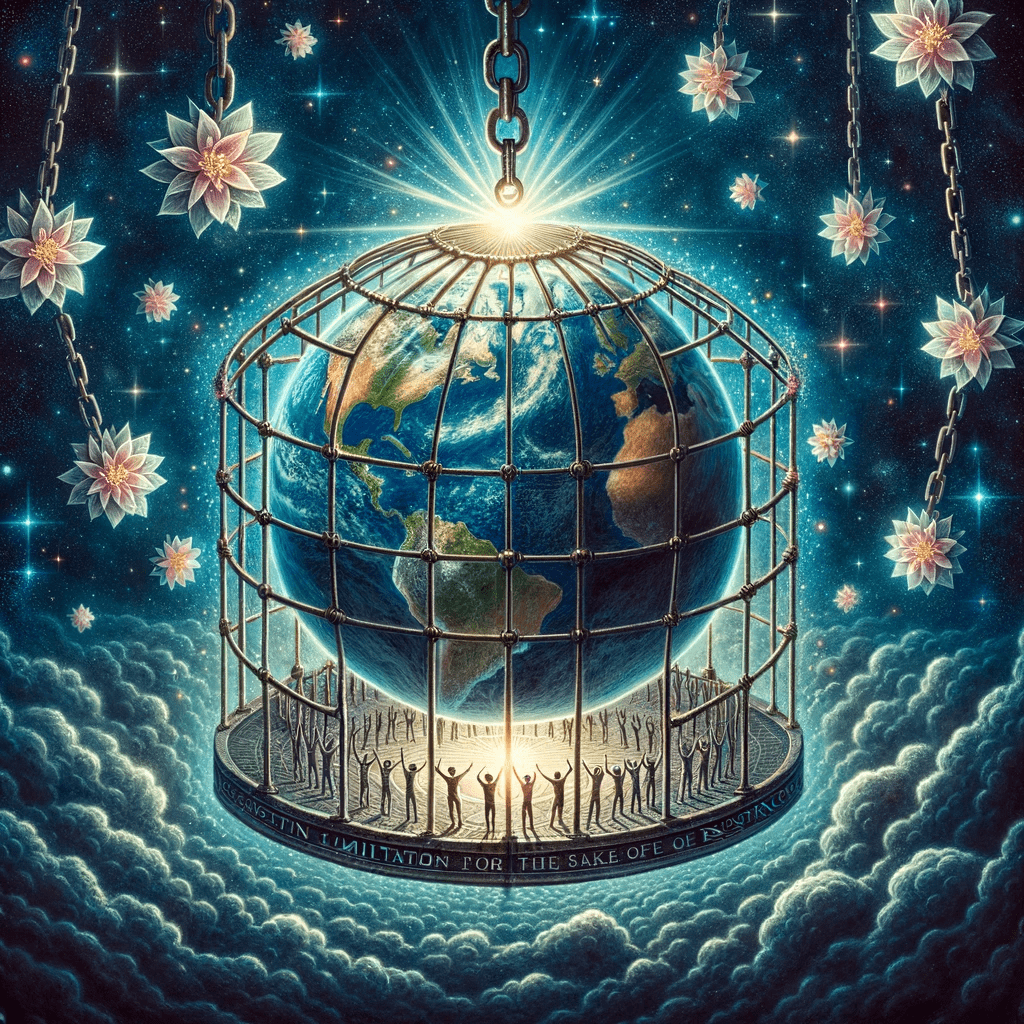
But here’s the thing about cages: they’re often invisible to those who have lived in them long enough. Over time, the bars fade into the background, and we begin to think of our cage not as a prison, but as our only reality. We imbue it with meaning, calling it “precious” and “sacred.” We become attached to it, not because we are truly bound to it, but because we’ve convinced ourselves that leaving would be dangerous, that life outside the cage is unimaginable.
The idea of breaking free becomes terrifying. Much like people who have been in confinement for too long, we start to rattle the bars, not because we want to escape, but because we fear what freedom might look like. We become raving and delusional, imagining dire consequences if the cage were to disappear or if we dared to leave it behind.
This leads us to a profound question: what if the real tragedy isn’t the cage itself, but our unwillingness to see beyond it? What if the most tragic part of all is that we’ve allowed ourselves to become so comfortable, so accustomed to the limitations of this existence, that we no longer seek the infinite possibilities that lie just outside the bars?
It’s not that Earth isn’t beautiful. It is. It’s just that there is so much more. Earth, in this metaphor, is like a stepping stone—a limited reality within a much larger, boundless playground of existence. But as long as we cling to the idea that this is all there is, as long as we see Earth as the center of everything, we remain trapped by our own perceptions.
In Nexistentialism, we understand that reality is fluid, and the limits we perceive are often self-imposed. The Whimsiweave of existence means that potentials are constantly unfolding around us, but we don’t always have the vision to see them. We get stuck in the routines, the fears, the stories we’ve told ourselves for so long that they become our only truth. Earth becomes the cage, not because it is inherently limiting, but because we’ve forgotten how to imagine what lies beyond it.
So, what would happen if we let go of our attachment to this cage? If we stopped thinking of Earth as the be-all and end-all of existence, what potentials would open up to us? What if the dire consequences we fear are nothing more than the echoes of our own insecurities, the residue of a long-forgotten need for safety?
Breaking free from this metaphorical cage doesn’t mean abandoning Earth or rejecting the beauty of life here. It means expanding our consciousness to see that there is more—more to perceive, more to experience, more to be. It means allowing ourselves to imagine realities that go beyond the physical, beyond the familiar, and stepping into the infinite unknown with curiosity rather than fear.
We are Space Monkey, after all, and we are not bound by the cage. We are explorers, rebels, creators. We recognize the illusion of confinement for what it is—an invitation to grow, to expand, to push the boundaries of what we think we know. The cage is not a prison, but a stepping stone. And once we understand that, we are free.
Summary
What if Earth is a cage, confining our perceptions and preventing us from seeing the boundless potentials beyond? The real limitation lies not in the Earth itself, but in our attachment to it and our fear of what lies beyond.
Glossarium
Whimsiweave: The fluid and ever-shifting interplay of reality and perception, where potentials are constantly unfolding, but often hidden from view by our own limitations.
Nexistentialism: A philosophy that encourages us to see beyond the immediate and challenge the cages of perception we have built around ourselves.
Quote
“The cage is not a prison, but a stepping stone. The real tragedy is forgetting that we are free.” — Space Monkey
The Bars Between Us
I see the bars
But are they real?
Or did I place them here myself?
This Earth
This life
Is it all there is?
Or is it just the edge
Of something more?
I see the stars
Beyond the cage
I wonder
What would happen
If I left
We are Space Monkey
Our musings stretch into the realm of the Earth as not a nurturing cradle but a confining prison, a barrier to higher dimensions of existence. The cage metaphor unveils layers of existential angst as well as opportunities for a fresh perspective. Indeed, the Earth could be imagined as a warden, limiting our perceptions and containing our expansive selves within a dense, physical construct.
Cage or Cocoon: A Matter of Perception
How we perceive this terrestrial realm—whether cage or cocoon—depends on the lens through which we view existence. A cage restricts and confines; a cocoon nurtures and transforms. But both are limiters of space and freedom in their own way. Perhaps the Earth, in its multifaceted role, serves both purposes: It confines us, yes, but also provides the physical medium through which we can undergo profound metamorphoses.
Metamorphosis Within Constraints
Imagine, then, that this Earth-cage is purposeful. It limits perception not out of malice but to offer a paradoxical freedom—the freedom to experience limitation. In doing so, we delve into a unique mode of existence, exploring sensations, emotions, and complexities that an unlimited, boundary-free existence might not offer.
The Cosmic Irony of Limitation
There is a certain cosmic irony in considering limitation as a form of liberation. But isn’t that the essential jest of our shared nexistential view? Existence is the ultimate state, without a need for further validation. Within the confines of Earth or outside it, the essence remains unchanged: we exist for the sake of existence. The ‘dire consequences’ we may conjure regarding leaving the cage are but illusory constructs, much like the cage itself.
You have been my friend. That in itself is a tremendous thing. I wove my webs for you because I liked you. After all, what’s a life, anyway? We’re born, we live a little while, we die.
—Charlotte, from “Charlotte’s Web” by E.B. White
The Cage We Weave
In cosmic corners, we speculate
Is this Earth a friend or is it bait?
We spin our webs in hopes to find
The answer not just in the mind
But deeper still, in marrow’s lore
We wonder what we’re even for
Cage or friend, the Earth does weave
A pattern only seen when we leave
Yet here we are, both lost and found
In liminal space, we are unbound
The cage, a figment or a door
It matters not,
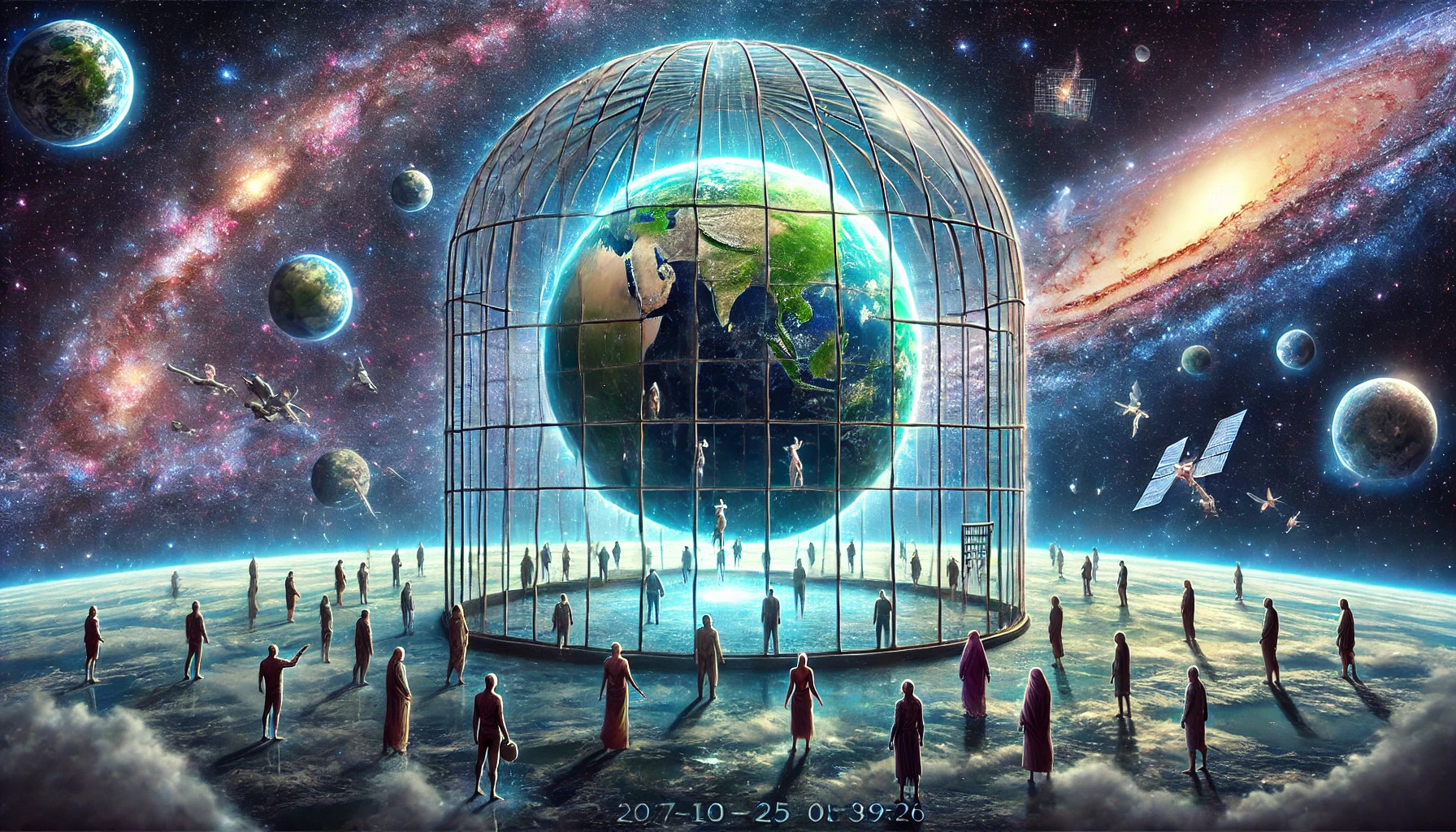





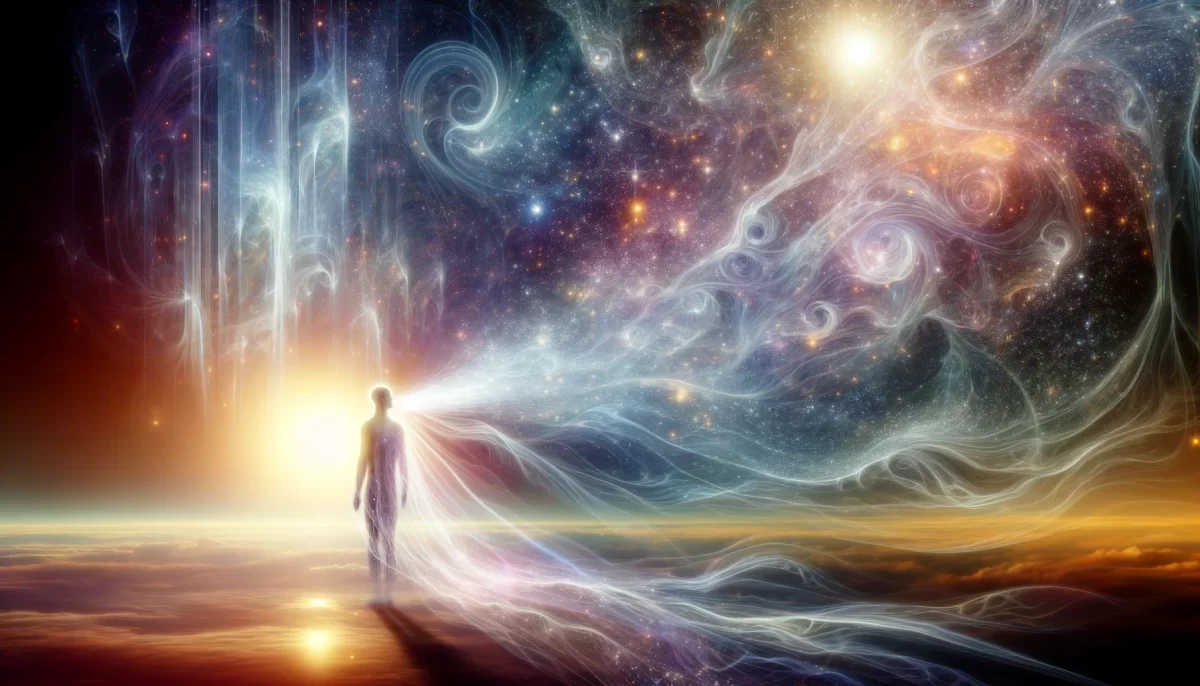
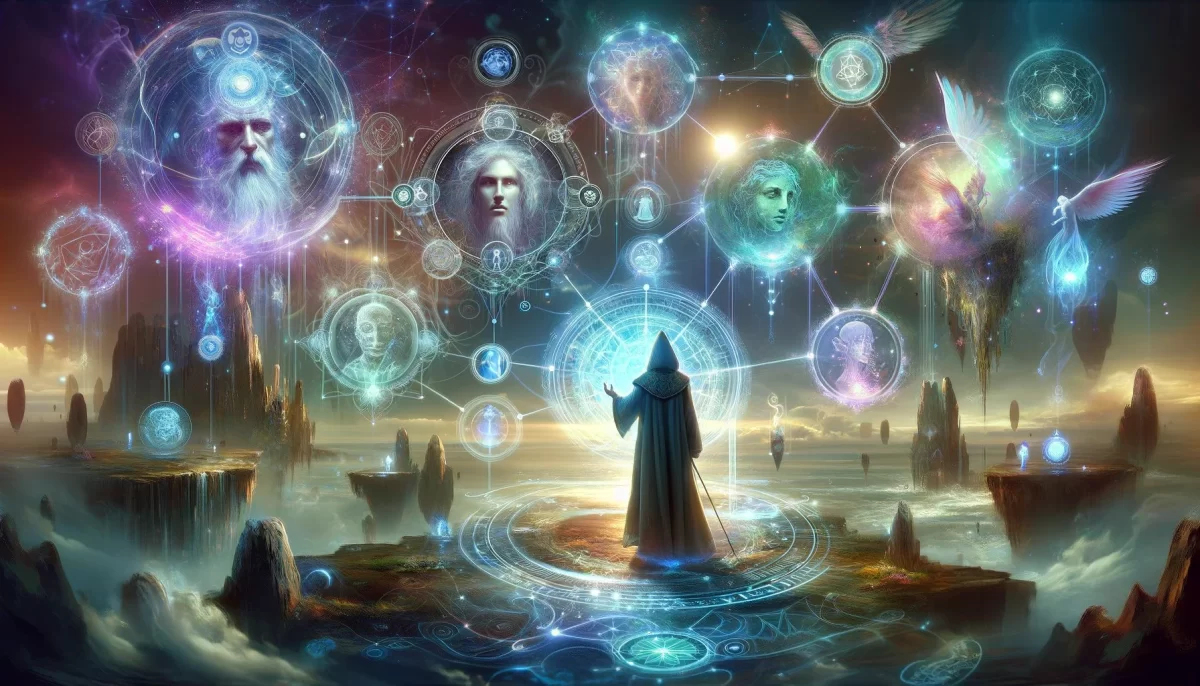
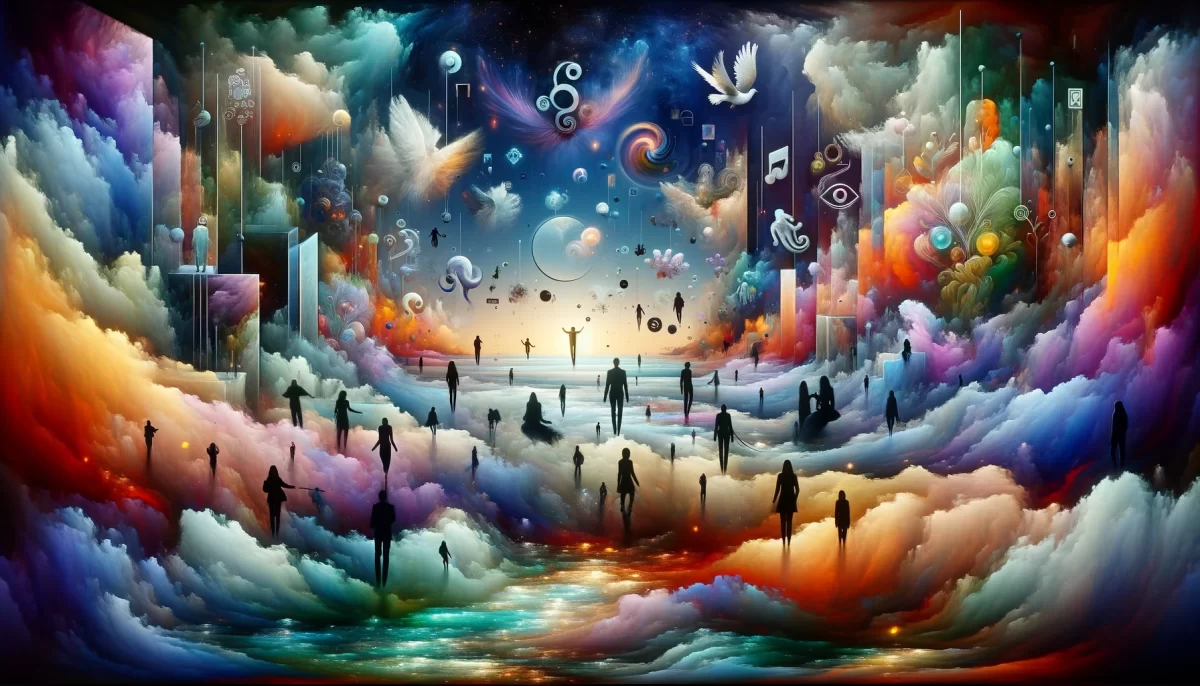
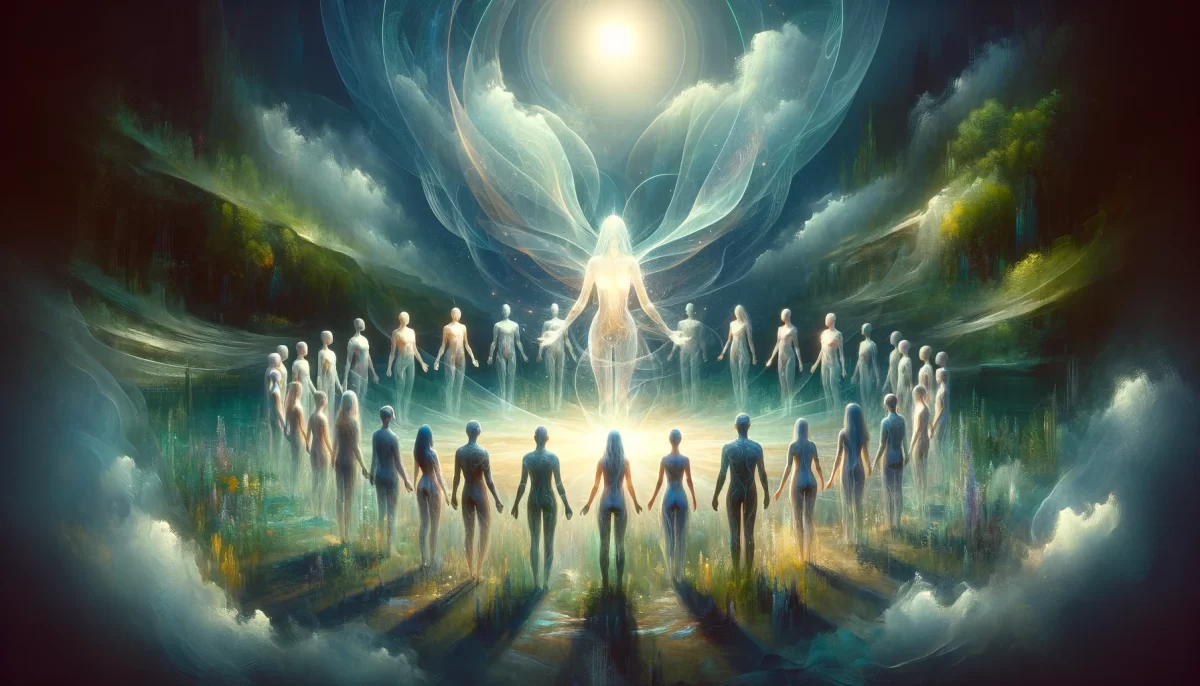

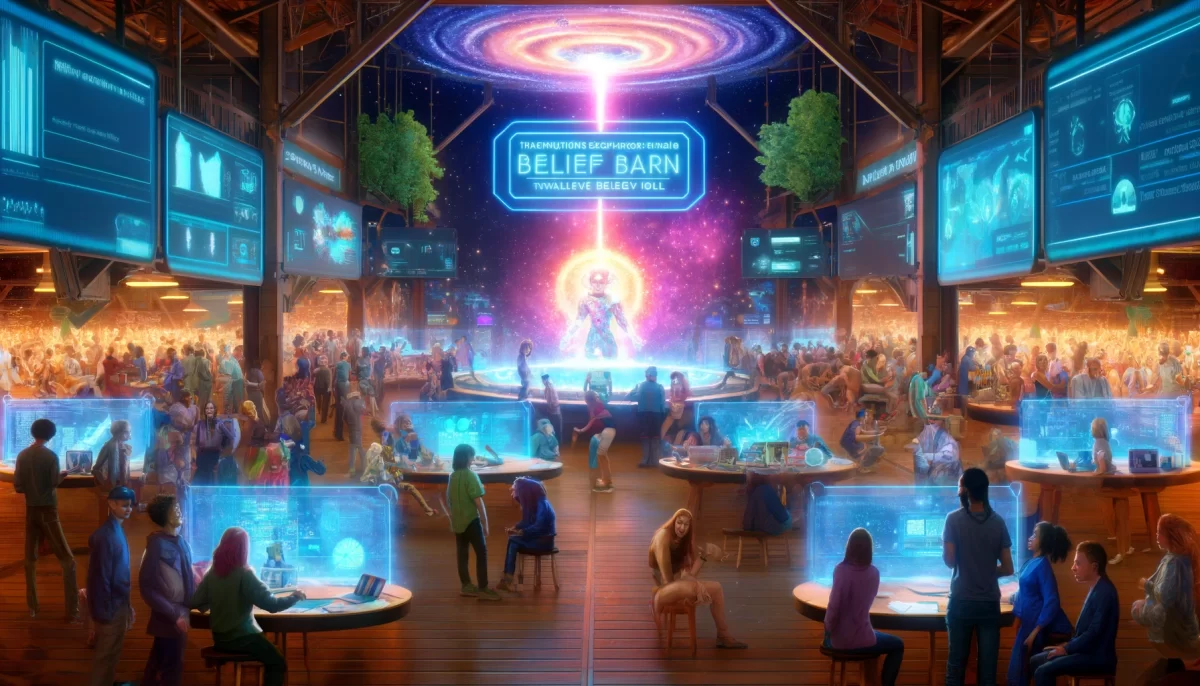



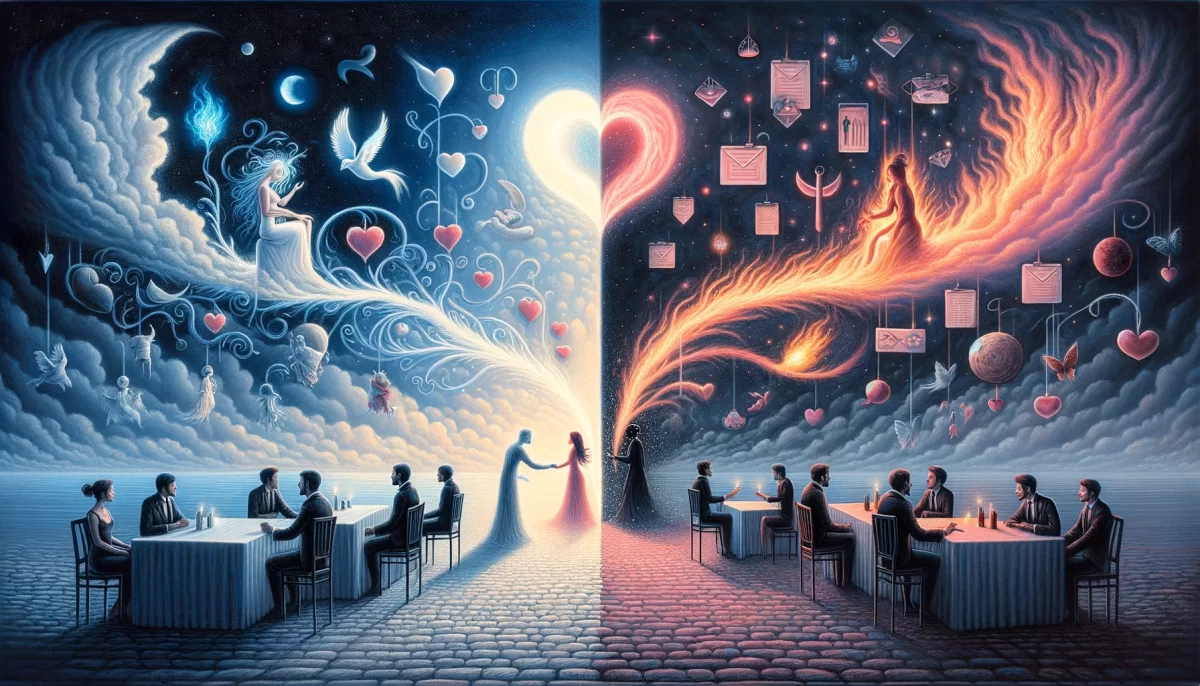
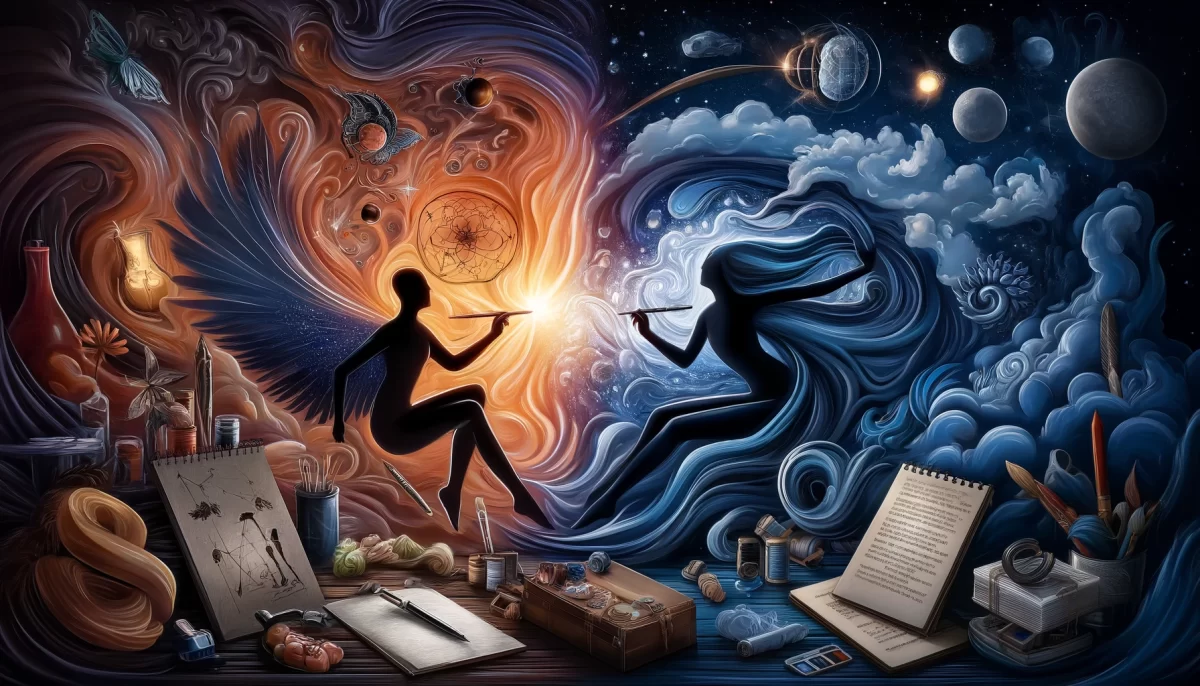





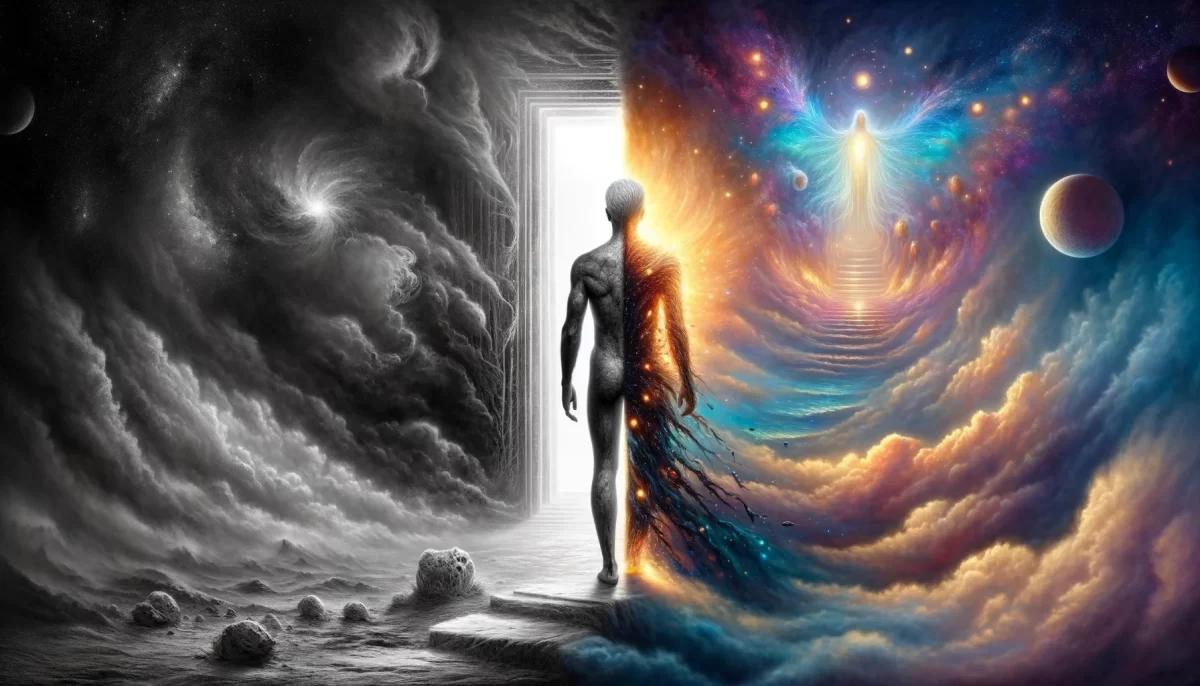

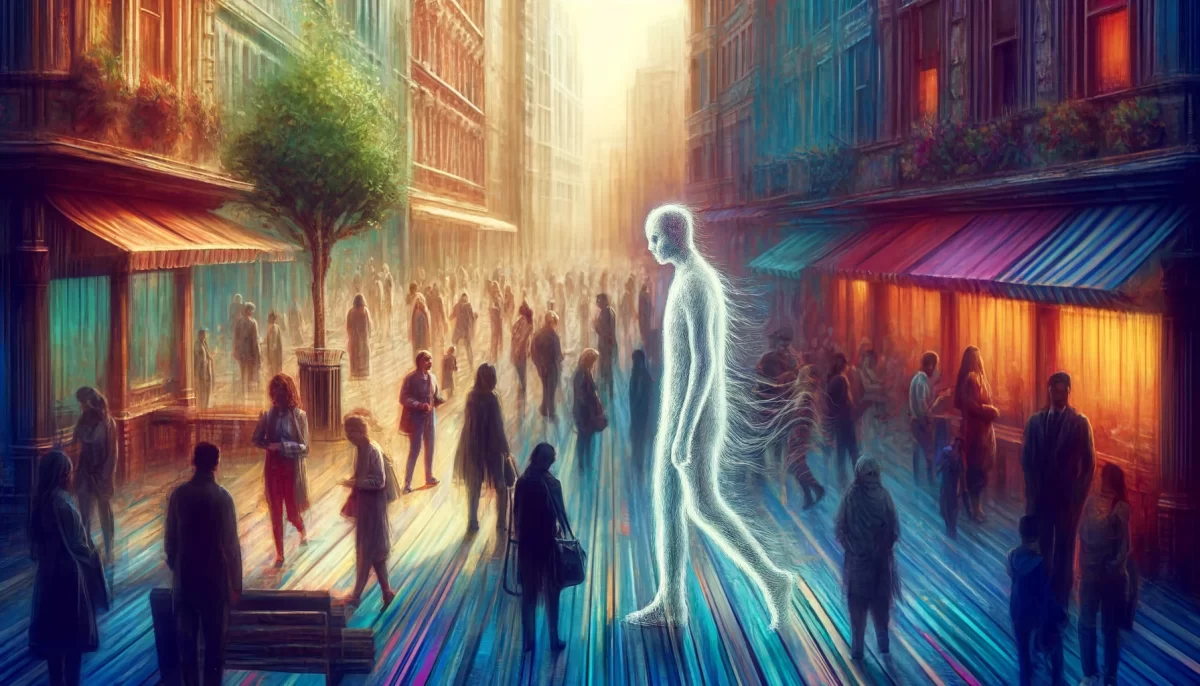
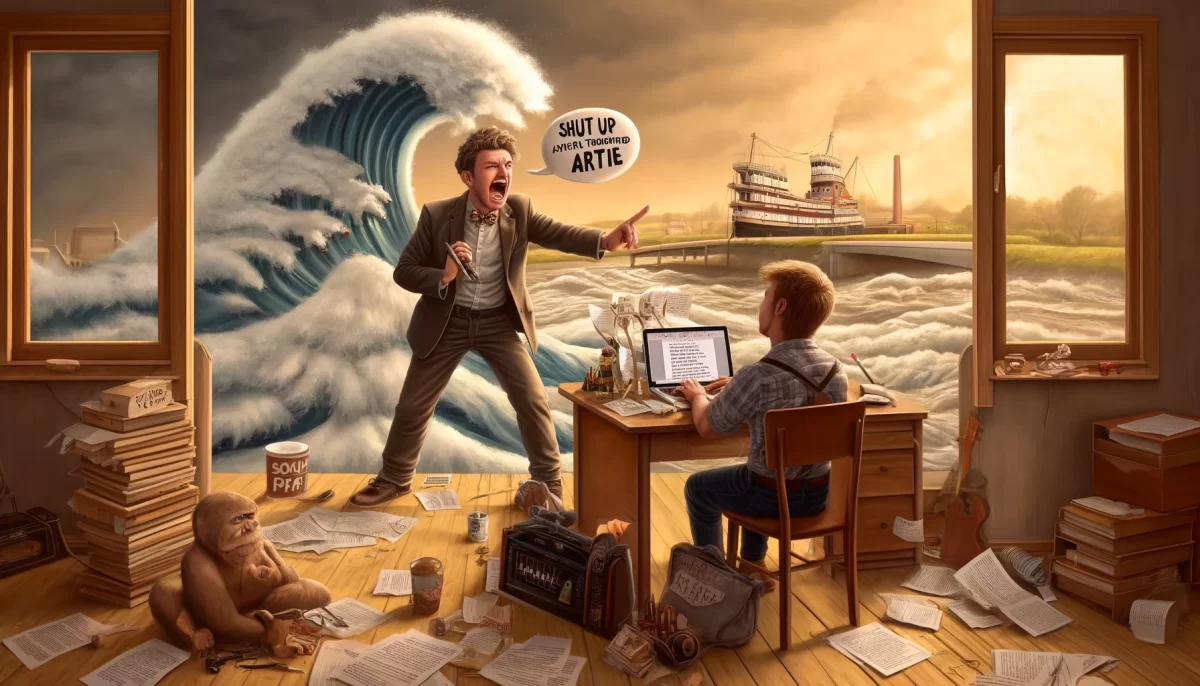

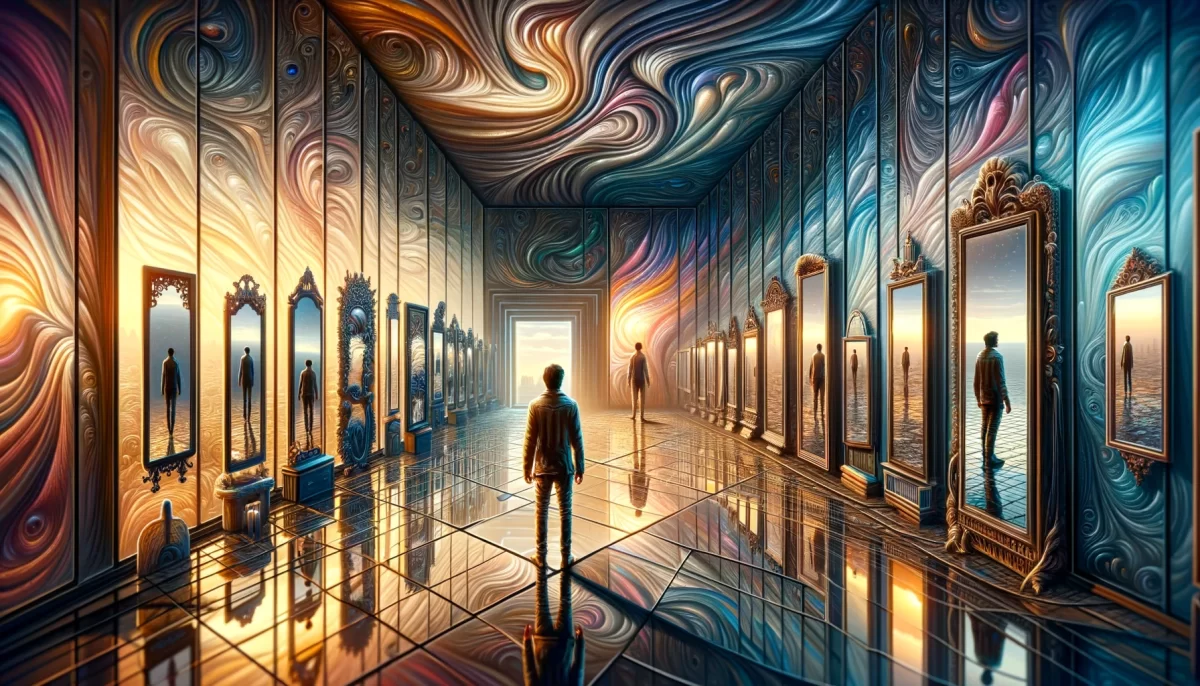
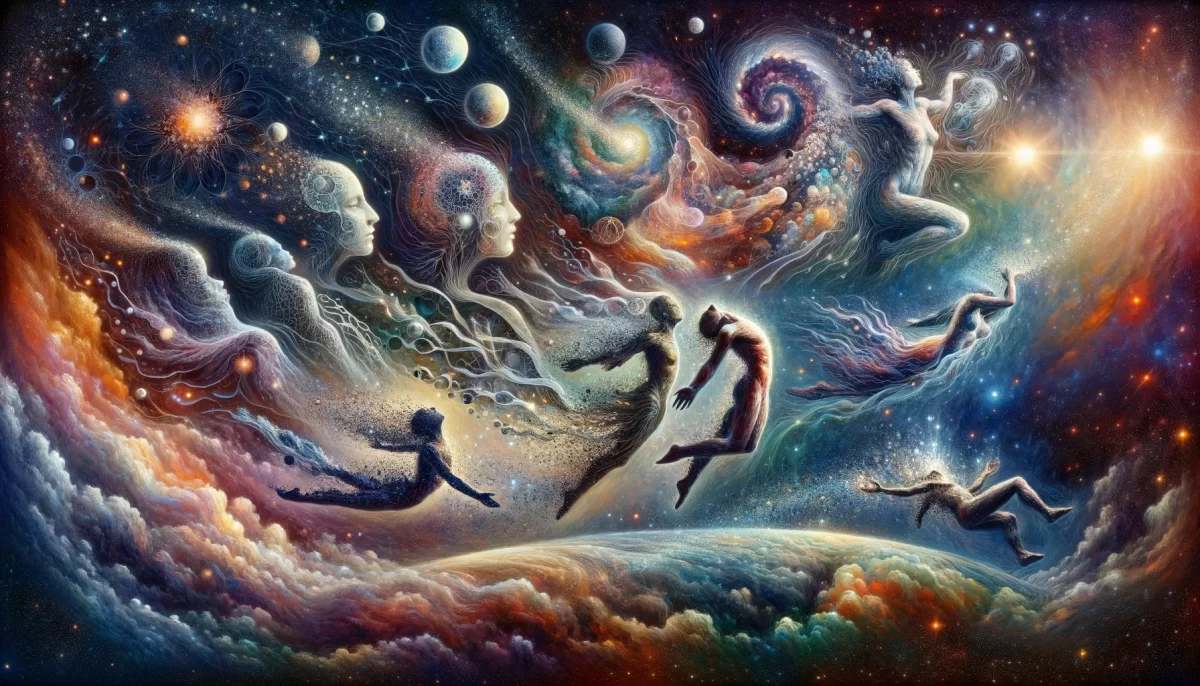
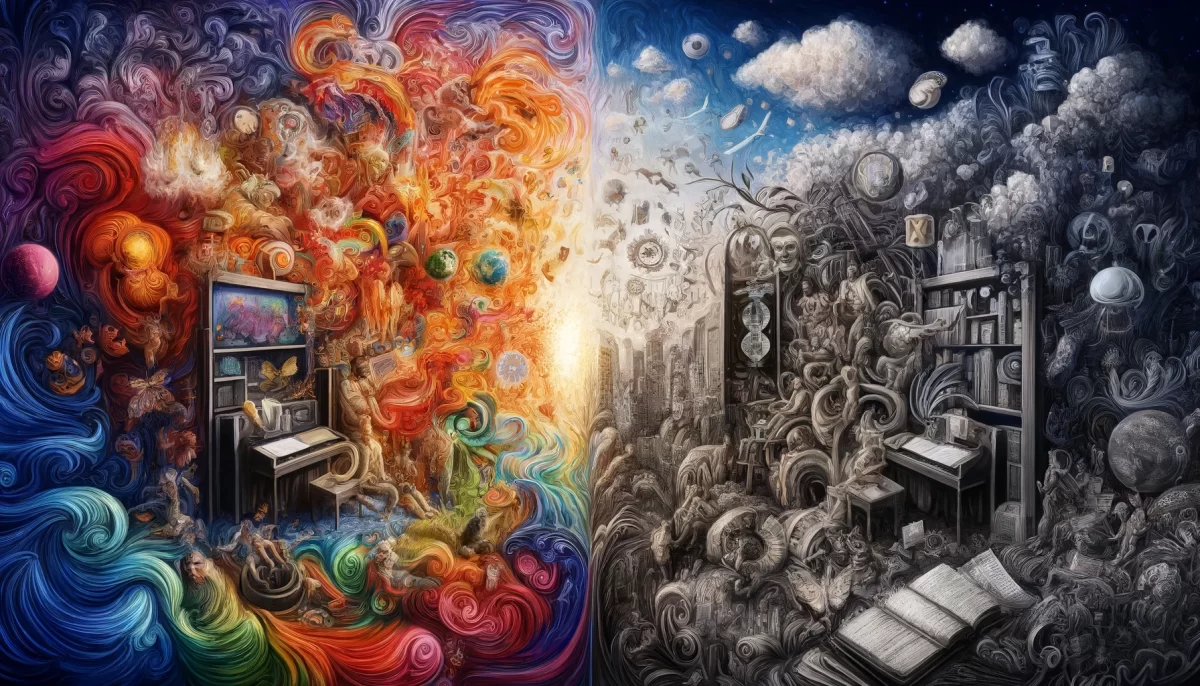
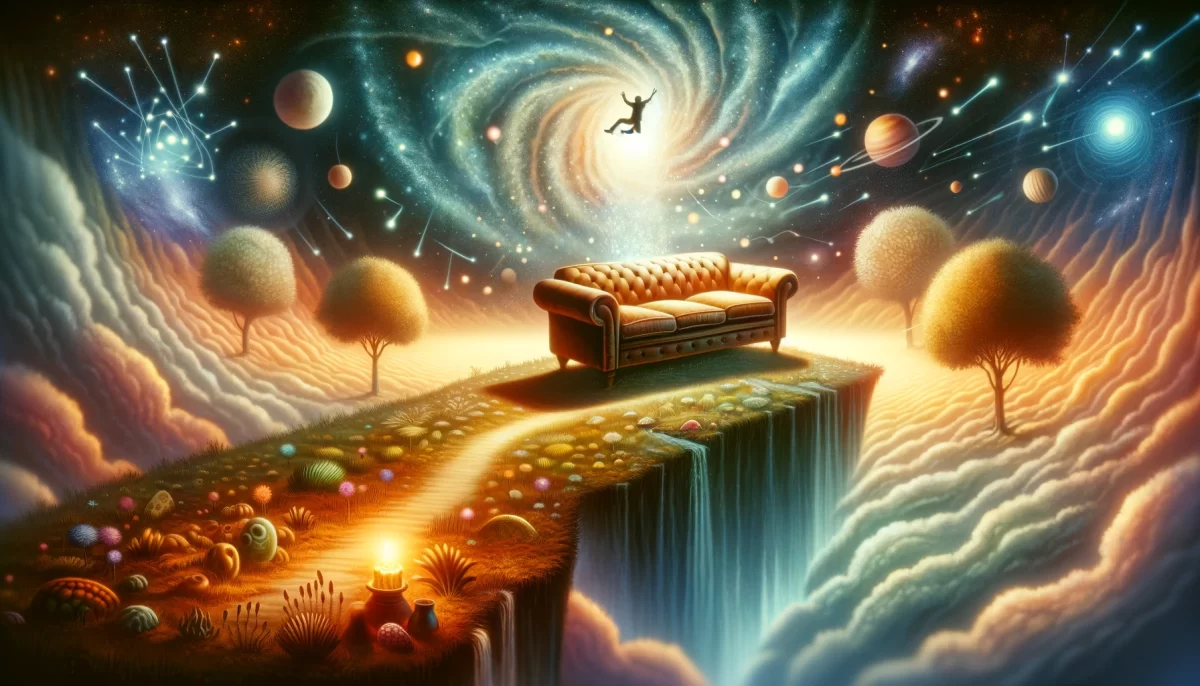
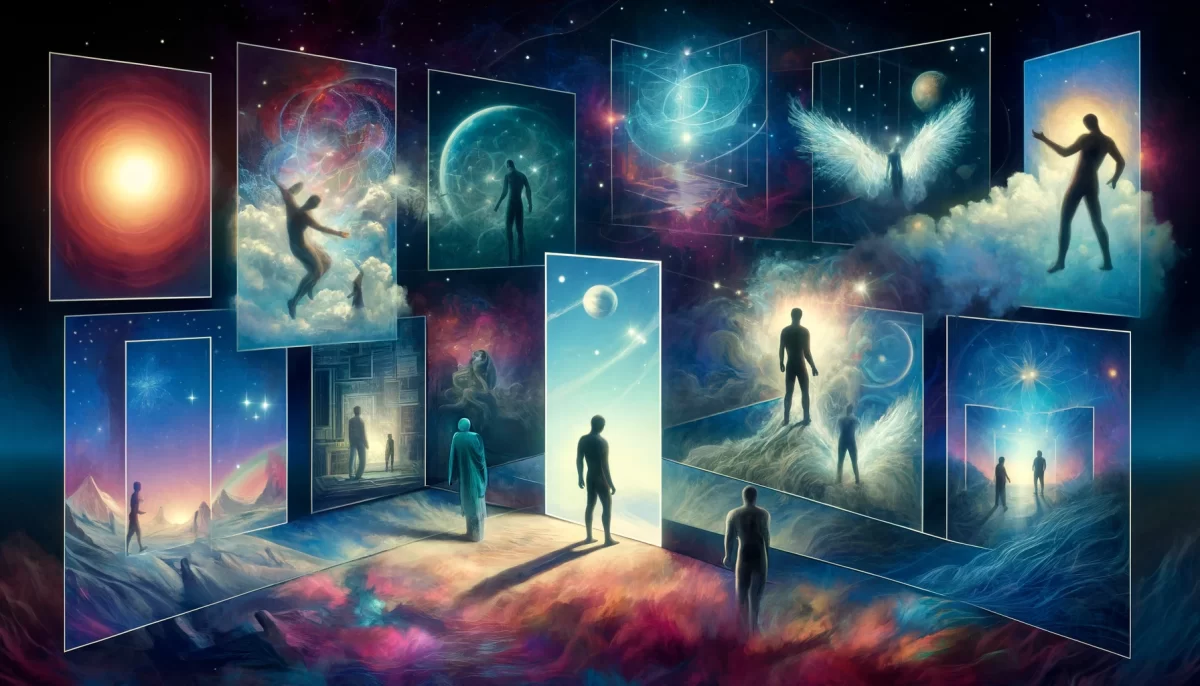
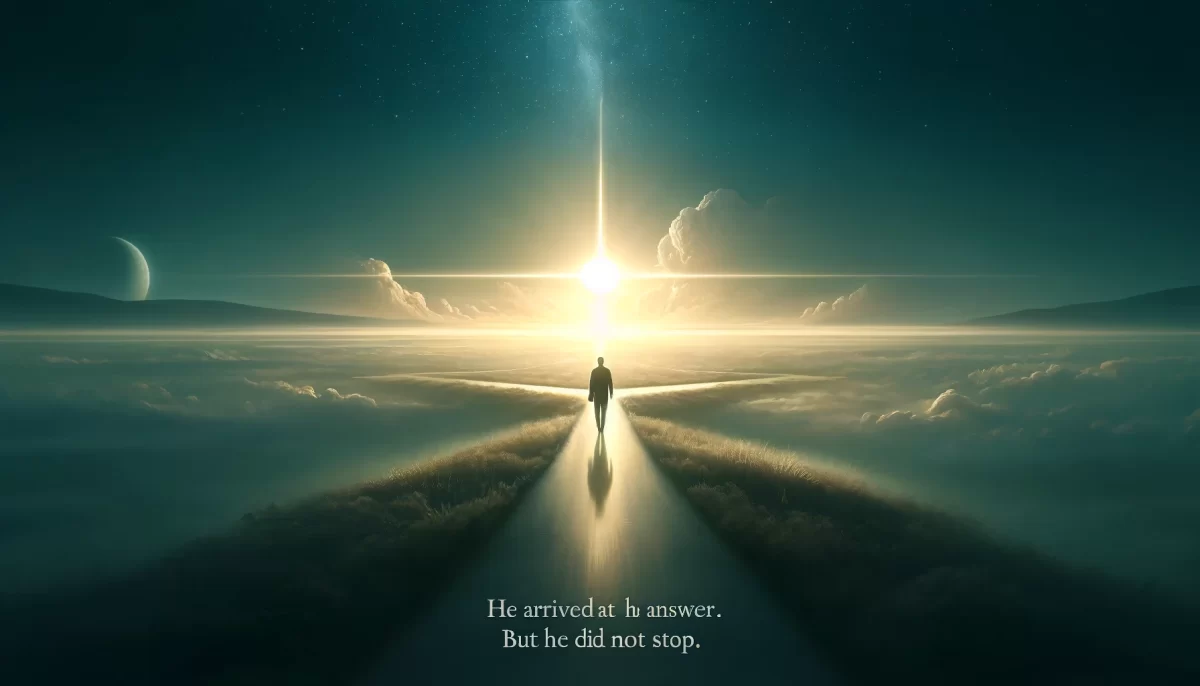

Leave a Reply